I’ve met quite a few people who live in fear of winter travel, or even winter staying-at-home. They’re utterly terrified of single-digit temperatures, and lock themselves up at the first sign of cloud. I’d brag, but I do the same thing when it’s too hot outside.
But I always try to point out that winter adventures need not be horridly atrocious nightmares. With a few carefully-chosen items, winter travel gear can be comfortable, functional, lightweight, relatively inexpensive, and still keep you warm and toasty the whole time. And the cornerstone of this intricate jigsaw puzzle is a packable down jacket.
What can a packable down jacket do for me?
Long known for making gloriously cozy comforters, goose down has a number of advantages over other materials that make it ideal for lightweight backpacking, even outside of winter. It’s the best way to go from “I was trudging through the frozen waste” to “I was exploring a beautiful winter wonderland.”
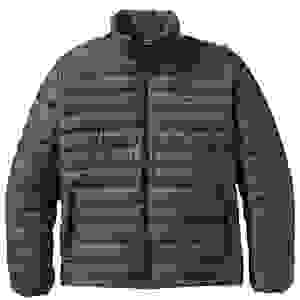
Observe:
- Warmth: Down is incredibly lofty, with millions of tiny bristles that keep warmth trapped inside. There’s very little on the planet as warm as high-quality goose down, particularly when it comes to materials that could actually make suitable clothing.
- Weight: The amount of down it takes to keep you warm weighs practically nothing, meaning you can make a down jacket that’ll be half the weight of comparably warm jacket made of other materials.
- Packability: All the loftiness that makes down warm and cozy also makes it incredibly compressible, meaning you can pack it into half the space of a typical fleece jacket.
And those are just the advantages of down itself; but since it’s almost always built into a jacket made of lightweight nylon, you get these added bonuses as well:
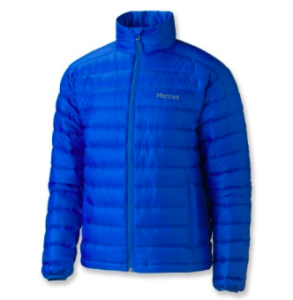
- Weather resistance: Pretty much all down jackets are windproof and water resistant, making them excellent outer layers, whereas even a thick fleece would probably still need an additional layer to keep out the wind.
- Silky smooth: They’re usually so frictionless that you can stuff a down jacket into nooks and crannies that would otherwise be empty, meaning it can often disappear into empty air pockets as if by magic. It also makes a nice, soft cushion for fragile belongings.
Where does a lightweight down jacket really excel?
Because of this particular combination of advantages, I find down jackets to be absolutely essential for ultralight winter travel, but they’re also quite useful in chilly fall or spring adventures. Instead of getting a super-warm parka, you can get a mid-weight jacket that’ll be useful in milder weather, and simply add other pieces when it gets down to freezing.

They’re also incredibly useful for the dreaded multi-season trip (or multi-elevation trip), which requires summer and winter gear to be packed into the same bag, with winter gear sitting uselessly half the time.
Since down jackets are lighter and more compressible than just about anything else, they’re by far the best option for these sorts of adventures. An unused down jacket will be half the size and weight of an unused anything-else jacket, making it a lot less annoying to haul around when not in use, allowing you to build a RTW packing list without much trouble.
My favorite setup is to use a lightweight fleece or wool zip-up sweater, which makes an excellent next-to-skin layer to wear over a t-shirt, and then add a packable down jacket on top, which makes an excellent weather-resistant outer layer. This allows for the versatility of multiple layers, while still remaining physically comfortable, fairly weather resistant, and light.
And now for details:
What the heck is fill power?
This is essentially the quality rating of the down. Fill power is the measurement of how much volume it fills up for a certain weight, after it’s compressed and allowed to expand once again. The higher the number, the better it is.

But since it’s a measure of both volume and weight, higher fill power doesn’t necessarily mean it’s warmer. It means it’ll be warmer for the same weight, or it’ll be lighter for the same warmth. More packable, too.
So yes, higher is better, but keep in mind it doesn’t necessarily mean a jacket with a higher fill power will be warmer. You could easily have a 600 fill power jacket just as warm as an 800 fill power jacket; it’s just that the 800 fill power jacket would probably be lighter and more packable, though it would also depend on thickness of fabric, how many zippers it has, overall length, and so on. A lower fill power will also be significantly cheaper, though you’ll be compromising somewhat on weight and compressibility.
What’s a good fill power?
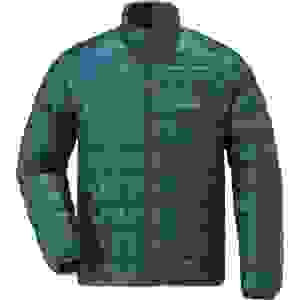
Most down jackets are somewhere around 400 to 600, but premium brands, such as those you’d find in a camping store, are typically around 800. They’ll cost more, but you’ll maximize the benefits of warmth, weight, and compressibility, and it’s not a bad investment if you live somewhere cold.
I’ve seen fill power go up to 1000, but it’s extremely rare, and quite expensive, as it requires selecting the highest quality feathers by hand. If you need the absolute best, well then okay. But keep in mind it’s only going to be 25% warmer (or 25% lighter) than 800 fill power down, but it could be twice as expensive.
For most purposes, 800 will be super warm, exceptionally light, and easily packable. And it’ll say it’s 800 right on the label. If you can’t find the fill power, you can be pretty sure it’s significantly lower, since they don’t want to bring attention to it. But again, a lower rating might not be so bad, particularly if you don’t plan on using it so often, or if you have plenty of space in the pack, and so on.
How much should I spend?
A high-quality down jacket can be anywhere from $100 to $1000. But typically they’ll be in the $150 to $250 range. Lower fill powers can bring the price down to $50, but it won’t be as ultralight or packable as you might want.

Since the raw material can be expensive, particularly for higher-quality down, there will often be a direct correlation between warmth and cost, meaning a lightweight down jacket might be $150, whereas a serious winter parka might be more like $300 or more. With exceptions, of course.
Personally, I prefer to keep each individual piece pretty light, and add extra layers during winter. A super-warm winter parka will only be useful in the winter, whereas a lighter jacket might be useful year-round when combined with other layers, so you won’t have to spend so much anyway. This will of course depend on where you live and travel, and how cold you usually get.
What’s the downside?
As magical as it might sound, goose down has one glaring deficiency: It’s terrible in the rain. Once it’s damp, it’ll stop being warm, and it’ll take a while to dry out once again.
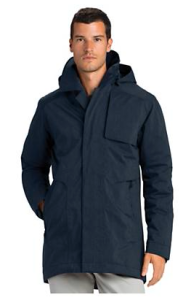
Luckily for you, this is a fairly easy problem to solve. All you need is an umbrella or a rain jacket, and you’ll be fine. You might be doing this anyway, but it’s especially important if you’re somewhere cold, and goose down is your body-heating weapon of choice.
It’s possible to find waterproof down jackets, and chemically treated goose down that’ll perform significantly better in the rain, but these can be fairly expensive, whereas you might have a rain jacket already anyway, so you might as well use it. They’re not a bad idea, though.
Keep in mind that if it’s below freezing the whole time, you don’t need to worry too much about rain.
On the other hand, you can go synthetic:
What about a synthetic packable jacket?
Though nothing on the planet seems to be as good as goose down for insulation and compressibility, synthetic insulation has one major advantage: It’ll work in the rain. While down wilts when it’s damp, synthetic insulation will retain some insulation value, and it’ll dry quickly. This can be incredibly helpful if you find yourself caught in a rainstorm without real rain protection.
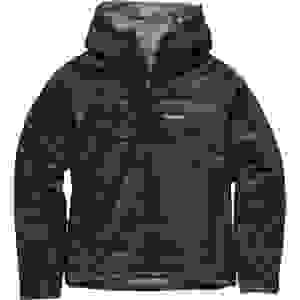
So although a synthetic packable jacket won’t offer the weight or compressibility advantages of goose down, it’ll get fairly close (still better than fleece), and that might be all you need. And as an added bonus, it’s almost always cheaper than down. Plus it’s vegan!
I wouldn’t say there’s a “correct” answer between down and synthetic, as it just depends on how you plan to use it, and how much you can spend.
Personally, I’ve used a synthetic, hooded, insulated jacket for years, and if it rains a little, I’ll probably be fine. For city travel, where you can duck under cover occasionally, it works.
But if you’re planning on walking around for hours at a time and you don’t want rain holding you back, you’ll definitely need a real rain jacket or an umbrella, regardless of whether you’re using down or synthetic. But you’ll definitely want real rain protection if all you’ve got is goose down.
Do I need a hood?
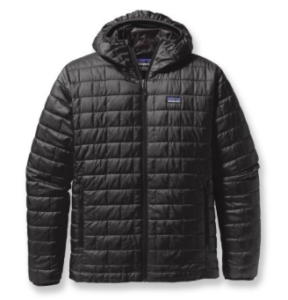
This is a bit of a tangent from the previous segment, and, again, just depends on how you want to handle things. If you’ve got a synthetic jacket and don’t mind walking around in the rain for a few minutes at a time, hoods are great. If you’re using goose down, you’ll probably want an umbrella or a rain jacket, in which case the hood might be kinda useless.
It’ll come down to personal preference, but hoods make a lot more sense for synthetic jackets, since they’ll be able to handle a little rain without much trouble. If you’re using down, you’ll probably want to rely on a real rain jacket, which will have its own hood anyway, unless you’re using a waterproof down jacket.
How about a vest?
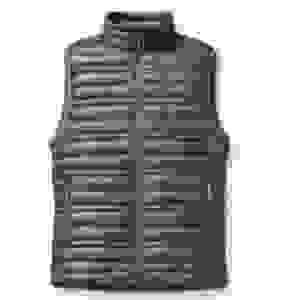
Vests are a good alternative to a big puffy jacket, since they’ll keep your torso nice and warm, without getting too bulky in the sleeves. This is especially helpful if you’re combining several layers together, which eventually makes it impossible to bend your elbows.
I would say that if you’re getting a vest, it makes more sense to use goose down, rather than synthetic. Since it’s only a partial layer, you’ll probably have something like a rain jacket as well, in which case you won’t need to worry about the down getting wet. The only advantage to a synthetic vest in this case would be that it’s usually cheaper.
Is there a best packable down jacket?
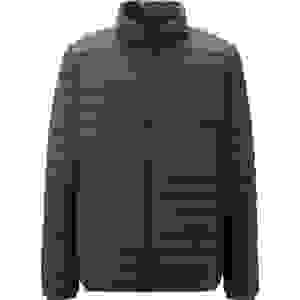
Nah, there’s no such thing as the best down jacket, as it often comes down to personal preference regarding fit, features, fabric, and so on. They’re all using the same raw material anyway. Remember that it’ll probably have to fit together with other pieces, so it’ll have to be looser than a fleece jacket or sweater, but slimmer than a rain jacket, and suitable for your body type.
That said, all the jackets and vests featured on this page are highly regarded items from reputable brands, many of which back their products with thoroughly impressive warranties. I also tried to pick the ones that have been around for years, rather than this-year-only models that’ll disappear sooner or later. There are certainly plenty of other great items out there, but the items listed above will be rock solid, and follow you on plenty of adorable adventures all over the world.
I am, however, happy to point people to Patagonia and North Face, who are working to eliminate problems with animal abuse in the supply chain. If you’re at all worried about the treatment of the animals involved, those are great places to look.
A little note on repairs: It’s easy to patch torn fabric with super-strong tape, and there’s a really neat set of repair tape from McNett, known as Tenacious Tape Tattoos. Not only do they create a permanent repair job, but they’re also cut into fun shapes, like dinosaurs, stars, moons, and other neat doodads. Instead of your jacket looking like it’s torn apart and taped over, it just looks like you’ve added some flair. McNett sent me a couple free sets, and I’m no longer dreading the moment my down jackets get torn apart, but looking forward to adding some fun nature scenes to them.
Have fun!

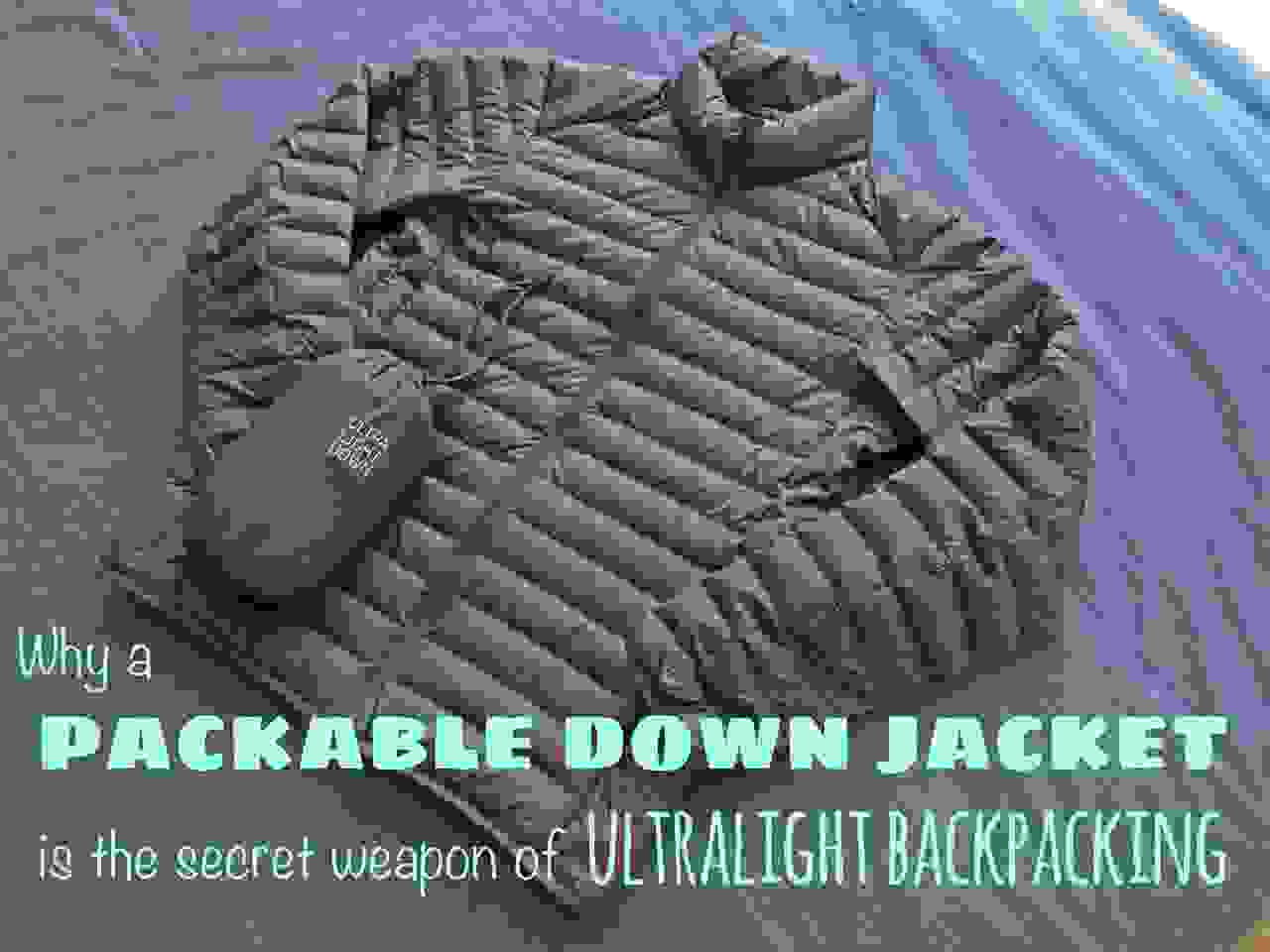



Interesting post, Eytan. I liked reading about some of the science behind down. My current winter coat is a peacoat that’s too heavy to travel with, so I usually carry my Patagonia R2 fleece. Maybe next winter, I’ll go for down.
Wool coats are the classiest of all coats, but they’re big and heavy too. I like them for use at home, or if you plan on wearing them every day of a trip, but lightweight and packable is the only way to go if you’re scrawny like me. But I’d keep at least a light fleece or something for underneath, though.
Just bought a down Patagonia for a trip up north. Wore it between fleece and a Gore-tex shell and I was snug as a bug down to about -30C. They weigh almost nothing and compress easily. Sold.
Yes! I find my down jacket and coat much more packable and useful than a fleece. Down doesn’t get too hot as quickly as synthetic fill jackets or fleece. Sleeping in a down jacket is the best way to improve an ultralight sleep system. I have a Marmot jacket (800 fill power) in grey and a black hooded down coat (650 fill power) from UNIQLO. They are both very packable and weigh under 9 ounces each. I use my Eddie Bauer hooded coat (pretty, but only 550 fill power) at home, but I could bring it on a winter city trip. I chose grey for my jacket because I find grey is the most flexible wardrobe color. I wore my grey jacket for early mornings on safari, but it was able to make it work in my Paris outfits later in the trip.
Yes, grey is the best thing ever. It goes with everything. Particularly when everything else I have is also grey…
Uniqlo uses the European scale to measure down so when they say its 650 its actually 750 fill
I just bought a 600 filled down PACKABLE jacket from LandsEnd ( at Sears store) and a store tag by the jackets ( not on the jacket itself) says 0 deg – 25 deg. 1) Can a 600 filled down jacket keep one warm to even 0degrees? I asked because even the store clerk wasn’t sure if that tag was for the jacket I bought or for the other surrounding jackets..which were also down…and 600 filled but not packable. And as I understand what you said about the fill..600 doesnt mean lighter or warmer. Will have to read that part more..to let it sink in.
Thanks for the links here as I also am looking for lightwt down vest ( and about 2 years ago..there was a Ber ardo 600 filled vest for $29.99 at Costco ! ..but no more :( )
They write that huge temperature range difference because everyone is different, and for some people it’ll be fine, and for other people it won’t. 600 fill power could be just fine, but remember it also matters how much of it there is. 600 is the efficiency measurement, but quantity is also a factor. Try to give it a test somehow. Hang out in a restaurant’s walk-in freezer or something.
I have managed to score two down jackets for < $30, on sale near the end of the season.
One from a grocery store that sells the Joe Fresh line,the other from a clothing store Urban Planet. Not as fancy or as well made as the Montebell or North Face, but very warm for the price, even on a winter camping trip.
Hi I have been reading about packable Down Jackets and a lot of the forums say that compressing down jackets reduces their ‘loftiness’ significantly and should re aired v. v. regularly, or should just never be compressed. What is your experience?
When you’re at home you should leave them unstuffed, just hanging on a coat rack like any other coat. When you travel you can stuff them. This is why sleeping bags sometimes come with a separate storage bag that’s much bigger than the stuff sack. While you’re traveling, obviously it has to be stuffed in the pack, but I wouldn’t worry too much about it wearing out. Down jacket can last a long time, especially if you fix them with repair tape if they get damaged.
Thanks for the reply! You’re blog is my bible atm as I plan my ultra lightweight trip…..
Good info on this post! Regarding yes or no for a hood on your jacket, I think hoods add a huge warmth factor. I have a Sierra Designs DriDown Hoody. The hood lets me bring only a beanie type wool cap and then I can use the hood like a balaclava. Super toasty and warm and saves a little weight on those higher elevation winter or shoulder season trips.
Yeah, probably helpful for really cold weather in the mountains and things like that. I generally prefer just a hat, but sometimes you want more, if it’s really windy and chilly.
I love your site. I’ve just managed to rip a little hole in my cheapo Uniglo ultralite down jacket. What repair tape do you use? I’ve just stuck sellotape over it as an emergency measure but I need to come up with something better
thanks
Frank
I haven’t gotten around to adding this yet, but I was going to tell people about Tenacious Tape Tattoos, from Gear Aid (part of McNett). It’s a permanent repair tape, but the “tattoo” version includes tape cut into all sorts of different shapes, like animals, plants, stars, and so on. So not only do you get to repair the jacket, but it actually looks decorative, rather than just damaged. I think it looks pretty neat that way. You can make a whole nature scene with a few different stickers and then it’s a conversation piece instead of looking weird.
Hi, thanks very much for sharing your experience.
What do you think about a leather jacket? I know that they are excellent for wind protection.
And what about skin-shirts? Similar to the ones soccer players wear.
Regards
It looks cool, but it’s probably going to be big and heavy. If you’re wearing it all the time, it’ll be fine, but if you’re dealing with lots of temperature changes, you probably have to stuff it in the backpack over and over again, and it’ll take up quite a bit of space. Not horrible, but maybe somewhat difficult to manage.
Hi!
Any opinion on the polyester vs. nylon question?
I find that nylon makes me perspire, and am therefore leary about purchasing an ultralight jacket…though I am utterly convinced of their practicality.
I.e. I have an A&F polyester down coat that is great, even walking into an overheated store in the winter. I have a nylon+polyester light rain jacket from North Face, which despite being a good brand, makes me perspire even if the temperatures are not necessarily soaring.
Any idea what is going on…?
Thanks for any input that would make my life easier…
Britta
I think the variation between the two is so broad that there’s a lot of overlap. I usually don’t worry about the difference. There’s polyester out there that feels great, and polyester that feels terrible. Same with nylon. Nylon is supposedly stronger, while polyester supposedly dries faster, but I think you can find specific samples that don’t fit that pattern.
I’d like to say it’s the warmth that’s making you overheat, rather than the nylon. Rain jackets are notorious for overheating, whereas goose down can actually respond to temperature pretty well, expanding or contracting depending on the temperature, to keep you warm in the cold, and cool in the heat (to a degree). The shell fabric of a down jacket obviously matters, but so many of them are similar that I wouldn’t worry too much about it…except for buying from a good brand, from a store with a good return policy.
Thanks for the great article.
My go-to getup for cold weather is : merino wool (icebreaker 150) tee shirt (long or short depending on how cold), light to medium fleece and an a packable down vest I got at Costco. I will also throw a rain jacket in my bag if I think I am going to be out for a while. The rain jacket serves two purposes. If it rains I am good to go, and/or it acts as another layer of protection if the temperature drops. I run warm so this may not work for all.